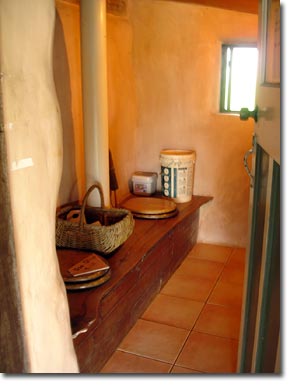
In a world where less than 1% of the planet’s fresh water is available for human consumption, it is curious to notice how people in overdeveloped countries choose to utilize precious water resources.
I often wonder what our grandchildren’s children will think of industrialized cultures; it is hope that inspires me to imagine them laughing. “Can you believe it?” they’ll say, holding their bellies and bursting with amusement at the ridiculousness of their elders. “They used our precious fresh water to flush their SHIT away!”
Over 884 million people globally lack access to safe water supplies – that is approximately one in eight people living on the planet whose water has been contaminated, generally by human excrement. In fact, over 5,000 people die worldwide everyday from drinking or bathing in water containing contaminants. [1] And we in the U.S. use over 5 million gallons daily just flushing away our waste.
From a health and a resource perspective, it’s hard to imagine a more inefficient system than a water flushing toilet. It contaminates water, and wastes our “waste.”
Anyhow, I digress. This blog posting was inspired by the chore of the day at the Permaculture Research Institute.
It was time to empty the composting toilet system, and I eagerly participated, curious to see how human “waste” could be utilized as a resource – quite a feat for our fecophobic world.
Here’s a quick rundown on how the composting toilet works. The composting toilet system at the farm is simple; a normal looking bathroom, with two normal looking toilets. Just like anytoilet, you pull your pants down, and empty your delivery into the hole that is attached to a chamber below.
(In industrialized cultures, that’s where your relationship with your poo ends – instead of taking responsibility for your shit, you simply flip a button and send it downstream, confident that someone else will take care of it, somewhere…).
Once the delivery is executed (whether yellow or brown), you add a scoop or two of sawdust, a carbon-based material that aids the decomposition process and helps balance out the nitrogen so that (smelly) ammonia isn’t released.
And people keep pooing away in to the chamber below, until it’s full. Then it sits for a few weeks, and meanwhile you switch to using the other toilet. If used properly with the right amount of carbon added, it won’t smell and won’t attract flies.
Simple as that.
When we went in yesterday to empty the chamber, my curiosity had mingled with a bit of dread. But I was determined; I had my gloves on and my nose plugged, prepared to feel the morning’s oatmeal churn…
Alas! I was shocked (dare I say thrilled?) to see that in less than four weeks, the excrement of forty people into a chamber had turned into a rich, humus-looking, stinkless mass – unidentifiable as human waste.
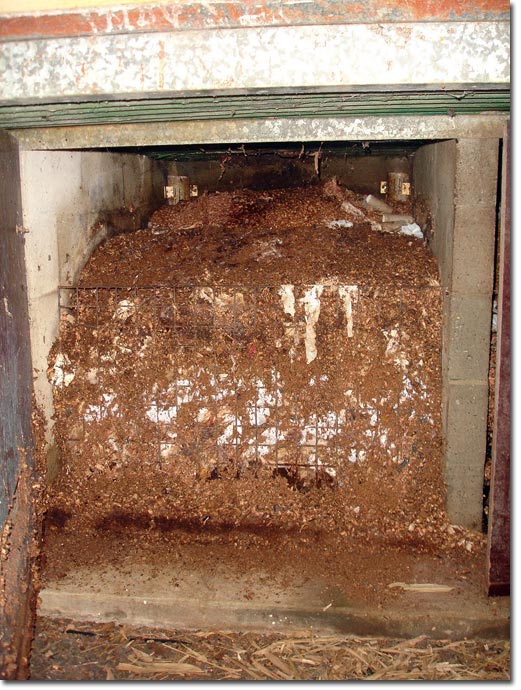
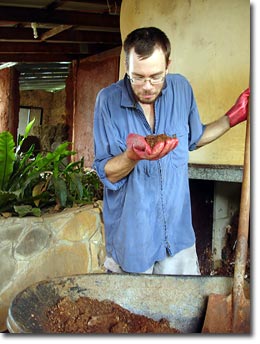 Fellow toilet compost removal technician, Dave, agrees |
Granted, it had not yet heated up to the process of destroying all of the potentially dangerous pathogens found in human excrement. That requires a heat of 50-55 degrees Celsius for several hours, easy to accomplish in any hot compost pile. Once the humanure has been decontaminated through a composting process, it is essentially a carbon sponge that can act as a substrate to grow beneficial microorganisms for the soil – a valuable resource for any backyard garden.
Though I am generally in favor of decentralized systems, where we can personally observe how our actions impact our local environment, I’m not necessarily saying that everyone must process their own waste on a household scale.
In fact, there are plenty of examples of sane ways to process effluent on a local scale, such as the Ecological Wastewater Treatment Plant in Arcata, California. The facility utilizes the microorganisms on a plant’s roots to break down pollutants in the water.
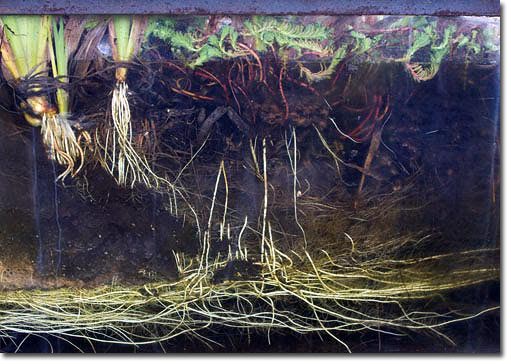
Or the Living Machine concept developed by John Todd which also filters sewage solids out of water using plants and their associated bacteria.
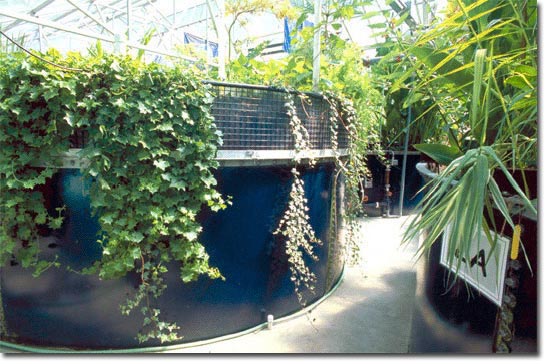
Marin County (home sweet home!) is even in the process of piloting a very progressive compost toilet program.
These are all potential models for a semi-centralized, but ecologically sound, waste processing system.
Nonetheless, it’s pretty empowering to know that we can safely and effectively process our own waste, conserve our water for more precious uses, and convert “waste” from a problem to a solution.
And to pick up from my last posting… I feel one step closer to my steak dinner now that I know my poo fertilized the soil that grew the grass that Red ate!
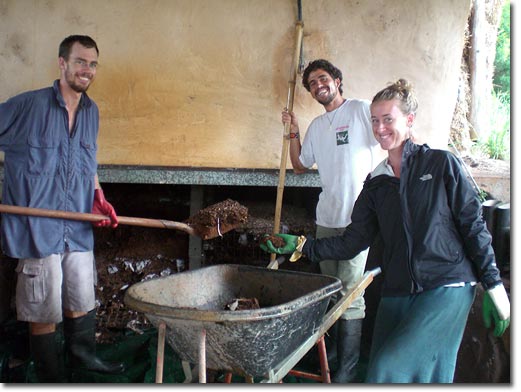
Team Humanure: Mission Accomplished!
For more titillating reading on the topic, you can download (for free!) the entire PDF of the Humanure Handbook. A good book to have on hand in the bathroom. ![]()
References:
Related Reading:

